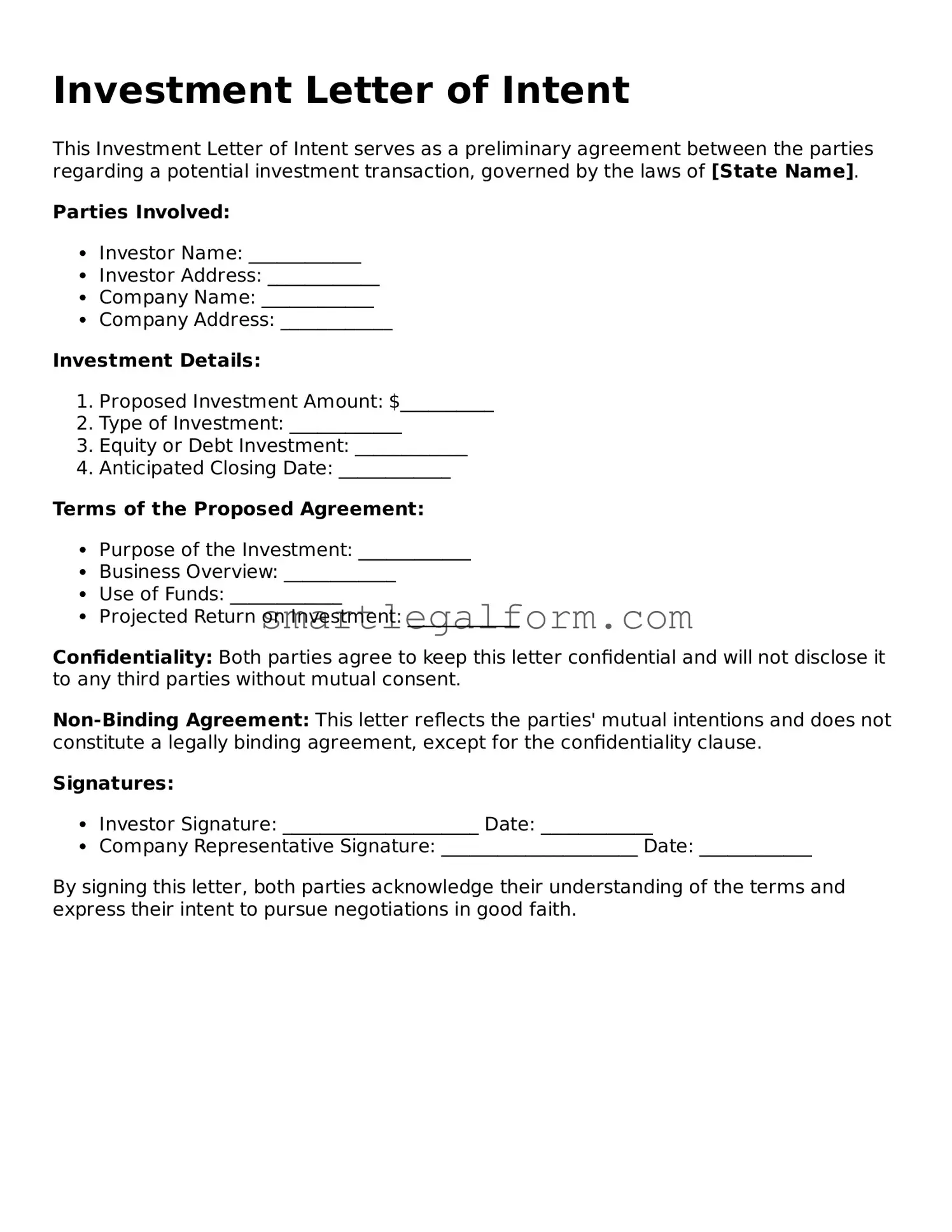Investment Letter of Intent
This Investment Letter of Intent serves as a preliminary agreement between the parties regarding a potential investment transaction, governed by the laws of [State Name].
Parties Involved:
- Investor Name: ____________
- Investor Address: ____________
- Company Name: ____________
- Company Address: ____________
Investment Details:
- Proposed Investment Amount: $__________
- Type of Investment: ____________
- Equity or Debt Investment: ____________
- Anticipated Closing Date: ____________
Terms of the Proposed Agreement:
- Purpose of the Investment: ____________
- Business Overview: ____________
- Use of Funds: ____________
- Projected Return on Investment: ____________
Confidentiality: Both parties agree to keep this letter confidential and will not disclose it to any third parties without mutual consent.
Non-Binding Agreement: This letter reflects the parties' mutual intentions and does not constitute a legally binding agreement, except for the confidentiality clause.
Signatures:
- Investor Signature: _____________________ Date: ____________
- Company Representative Signature: _____________________ Date: ____________
By signing this letter, both parties acknowledge their understanding of the terms and express their intent to pursue negotiations in good faith.
